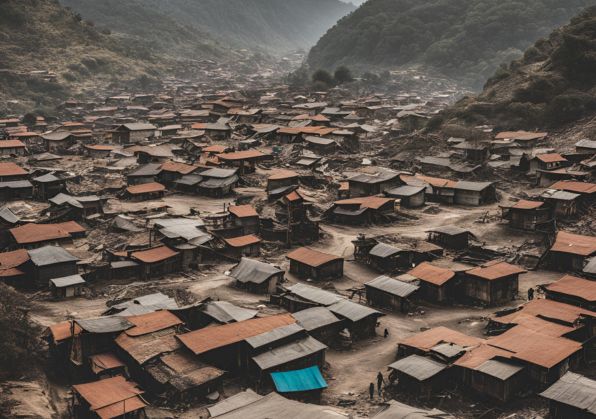In 2024, the world continues to face significant challenges, as political instability, ongoing wars, and humanitarian crises persist in numerous regions. Nations like Yemen, Afghanistan, Sudan, and Ukraine are grappling with the devastating consequences of conflict, while the global landscape reflects widespread insecurity. This blog explores the most dangerous countries in 2024, using the Global Peace Index (GPI) as a critical benchmark to assess levels of violence, societal safety, and militarization across these regions.
Conflict and instability are not just remnants of past years but active forces shaping global dynamics in 2024. The Global Peace Index (GPI), an annual report that evaluates 163 nations based on 23 indicators—ranging from societal safety to levels of militarization—serves as a key measure of a country’s safety and stability. This comprehensive report ranks nations based on internal conflicts, law and order, and the threat posed by violence. This post delves into the most dangerous countries today, where humanitarian crises, political chaos, and ongoing conflicts have created environments of extreme peril.
World’s Most Dangerous Countries in 2024: A Closer Look
Yemen (GPI Score: 3.397)

Yemen has remained at the forefront of global instability since the onset of its civil war in 2015. A brutal conflict involving various factions and external powers has led to unimaginable suffering for the Yemeni people. Infrastructure collapse, rampant famine, and outbreaks of disease have plagued the country, and the humanitarian crisis has only worsened in 2024. The ongoing war has disrupted essential services, destroyed homes, and displaced millions, making Yemen one of the world’s most dangerous nations for civilians.
Humanitarian Toll:
- Population affected: 80% (24 million people)
- Malnourished children: Over 2 million
- Displaced persons: 4 million
Sudan

Sudan’s internal strife continues in 2024, particularly in conflict zones like Darfur, South Kordofan, and the Blue Nile. These violent confrontations have left over 3,000 dead and nearly 2 million displaced. The situation is exacerbated by attacks on civilians by government forces, opposition groups, and militias, making it extremely unsafe for people in affected regions. According to the UN, more than 14 million Sudanese are in desperate need of humanitarian aid.
Humanitarian Toll:
- Total population affected: 14 million
- Deaths in 2024: 3,000+
- Displaced persons: 2 million
South Sudan (GPI Score: 3.324)

South Sudan, the world’s youngest nation, continues to be mired in civil conflict and ethnic violence since its independence in 2011. Political instability has led to rampant insecurity, with many citizens facing daily threats. Internal conflicts combined with external pressures make South Sudan one of the world’s most dangerous countries in 2024.
Key Statistics:
- GPI Score: 3.324
- Humanitarian crisis: Ongoing since 2011 independence
Afghanistan (GPI Score: 3.294)

Afghanistan remains deeply entrenched in instability following decades of conflict and the Taliban’s seizure of power in 2021. Widespread violence, terrorism, and kidnappings are a daily reality. Even in 2024, it is a focal point of global concern, with many regions remaining inaccessible to humanitarian aid.
Humanitarian Toll:
- Population displaced internally and externally: Over 5 million
- Deaths due to violence since 2021: Over 200,000
Ukraine

Since the Russian invasion in February 2022, Ukraine has faced one of the most intense and destructive conflicts in recent European history. By 2024, over 150,000 lives had been lost, and millions have been displaced both within the country and abroad. Cities have been destroyed, critical infrastructure, including homes, hospitals, and schools, is in ruins, and the ongoing war shows no signs of abating.
Humanitarian Toll:
- Death toll (2022-2024): Over 150,000
- Displaced persons: Millions
Democratic Republic of Congo (DRC)

The DRC continues to be a volatile and dangerous region in 2024, plagued by one of the deadliest conflicts in African history. The violence, spanning over four and a half years, has taken more lives than any conflict since World War II. Widespread instability and violence persist, making the DRC an unsafe region for millions of its residents.
Humanitarian Toll:
- Death toll: Over 5 million since the beginning of the conflict
- Years of conflict: 4.5+
Russia (GPI Score: 3.249)

Russia’s involvement in the Ukrainian war has exacerbated its internal and external instability. Internally, the country struggles with organized crime, corruption, and a weakening law-and-order framework. Additionally, environmental concerns and health risks from industrial pollution add another layer of complexity to the dangers faced by its citizens.
Syria

Syria remains a war-torn nation in 2024, with its civil war—beginning in 2011—continuing to ravage the country. The widespread destruction of infrastructure and the displacement of over 6.6 million internally displaced persons have created a severe humanitarian crisis. Many Syrians remain in desperate need of food, shelter, and medical services as violence continues.
Humanitarian Toll:
- Displaced persons: 6.6 million internally
- People in need of aid: Over 13 million
Mali

Ongoing conflicts since 2012 have made Mali one of the most dangerous countries globally. Political turmoil, ethnic violence, and insurgencies have disrupted life in many parts of the country. The conflict shows no signs of resolution, with millions of Malians affected by the continuous violence.
Humanitarian Toll:
- Years of conflict: 12+
- Displaced persons: 400,000
Conclusion:
The geopolitical landscape in 2024 remains rife with conflict, instability, and humanitarian crises. Countries like Yemen, Afghanistan, Sudan, and Ukraine are at the forefront of this global unrest, with millions of lives at stake. As these conflicts drag on, they continue to exacerbate social and economic conditions, creating environments that are hazardous for citizens and nearly impossible for aid workers to access.
Disclaimer: This post is based on publicly available data, including the 2024 Global Peace Index and other reputable sources. The GPI scores and statistics mentioned may fluctuate with ongoing developments, and readers are encouraged to refer to updated reports for real-time analysis.
By understanding these volatile regions, the global community can better prioritize aid and diplomatic efforts to restore peace and stability.




